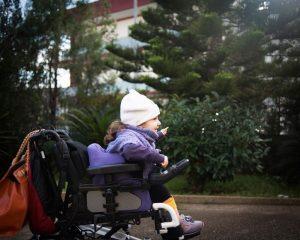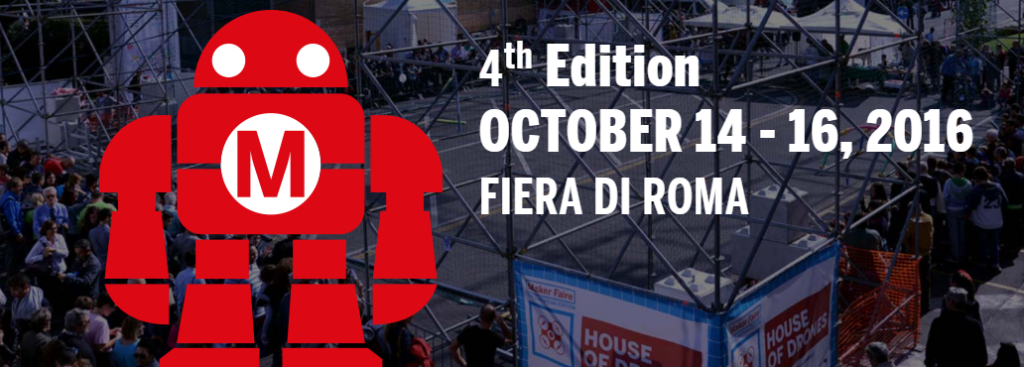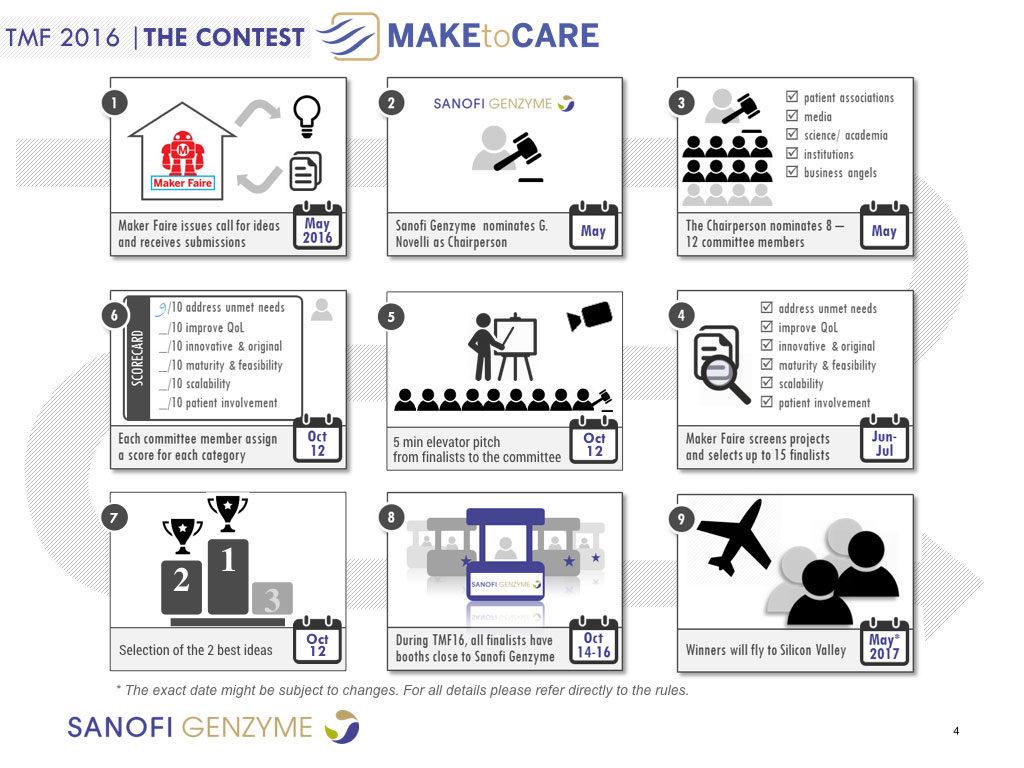Some people become makers out of a love for craft, technology and/or self-sufficiency. Others become makers out of sheer necessity – such as Fabio Gorrasi, a father of three whose youngest child, Roberta, suffers from spinal muscular atrophy (SMA). The rare disease, which affects the motor nerve cells in the spinal cord, takes away sufferers’ physical strength and robs them of the ability to walk, swallow or, in severe cases, even to breathe.
Six-year-old Roberta, who cannot walk and has difficulty swallowing and controlling the movements of her head and neck, has to wear a brace, but the one her insurance provided her with caused her a lot of discomfort. Distressed at seeing his daughter crying all the time, Gorrasi decided to literally take matters into his own hands and create a better brace himself. It took two years, but his hard work resulted in a device created from machined aluminum alloy and custom-molded to fit Roberta.
The brace, which is 40-45% lighter than conventional devices and can be adjusted to accommodate Roberta as she grows, not only relieved the little girl of her discomfort but drew the interest of others in similar situations.
“With this brace everything changes: the embrace becomes even stronger, because the structure is flexible,” said Gorrasi. “And today the peculiar thing is that other families have turned to me.”
 The device also caught the attention of biotech company Sanofi Genzyme, which specializes in the development of treatments and therapies for debilitating diseases like Roberta’s. The company came across Gorrasi and his invention at Maker Faire Rome in 2015, and were so inspired by his ingenuity and dedication that they came up with an initiative to encourage and enable others to design solutions for easing the daily lives of those suffering from debilitating conditions. The Make to Care program has been launched in conjunction with Maker Faire Rome 2016, and invites all interested makers to submit their ideas by June 30.
The device also caught the attention of biotech company Sanofi Genzyme, which specializes in the development of treatments and therapies for debilitating diseases like Roberta’s. The company came across Gorrasi and his invention at Maker Faire Rome in 2015, and were so inspired by his ingenuity and dedication that they came up with an initiative to encourage and enable others to design solutions for easing the daily lives of those suffering from debilitating conditions. The Make to Care program has been launched in conjunction with Maker Faire Rome 2016, and invites all interested makers to submit their ideas by June 30.
To enter the contest, submit your idea to Maker Faire’s Call For Makers by the end of the month. 15 finalists will be chosen by the end of July, at which point they will be expected to create prototypes to be presented at the Maker Faire from October 14-16. On October 12, the finalists will present their ideas to an evaluation committee who will vote for the two best devices. The two winners will each be awarded a one-week trip for two to Silicon Valley, where they will meet with fellow innovators in May 2017.
Designs can incorporate 3D printing, robotics, or any of a number of technologies or design techniques. Participation is open to anyone in the European Union, excepting Sanofi Genzyme employees and their immediate relatives. Several criteria will be used to evaluate the winning designs, including:
- Ability to address unmet needs
- Potential to increase quality of life
- Innovation and originality
- Maturity and feasibility
- Scalability and potential for application across other areas
- Direct involvement of patients and/or patient associations
“Over the years, we have understood that patients (and caregivers) need more than drugs and treatments in their daily living,” said Filippo Cipriani, Market Access Associate Director, Europe and Health Economics & Market Access Manager, Italy for Sanofi Genzyme. “In fact, facing a disability situation requires smart approaches, which might be developed by the Maker community along with (patients or patients’ associations)…This is what Make to Care is all about: It’s much more than a contest…it’s the tremendous opportunity to listen to some needs and develop solutions.”
It’s free to enter the contest, and all finalists will be given a booth at Maker Faire Rome. You can learn more on the contest website or on Twitter under the hashtag #MaketoCare. Meanwhile, Gorrasi, emboldened by his success with his brace design, is now planning to develop additional assistive technology, including a wheelchair and a thermal pool. Discuss further over in the Maker Faire Rome Sanofi 3D Printing Contest forum at 3DPB.com.
Subscribe to Our Email Newsletter
Stay up-to-date on all the latest news from the 3D printing industry and receive information and offers from third party vendors.
You May Also Like
3D Printing Financials: Protolabs’ Q1 3D Printing Revenue is Flat, Company Advances in Technology Push
Protolabs (NYSE: PRLB) has kicked off 2024 with a mild boost in revenue, revealing how the Minnesota-based company manages to adapt and thrive even in uncertain market conditions. While the...
NASA Backs Project for 3D Printing Space Sensors
NASA granted $300,000 to Florida State University (FSU) and Florida Agricultural and Mechanical University (FAMU) to pioneer a project using 3D printing to develop cutting-edge sensors capable of withstanding the...
Further Understanding of 3D Printing Design at ADDITIV Design World
ADDITIV is back once again! This time, the virtual platform for additive manufacturing will be holding the first-ever edition of ADDITIV Design World on May 23rd from 9:00 AM –...
Daring AM: Rocket Lab Shoots for the Stars, Astrobotic Wants to 3D Print on the Moon
Once again, space exploration teams up with the 3D printing industry, launching projects that could change how we explore space. Pioneering space manufacturer Rocket Lab (Nasdaq: RKLB) secured a $14.49...




































